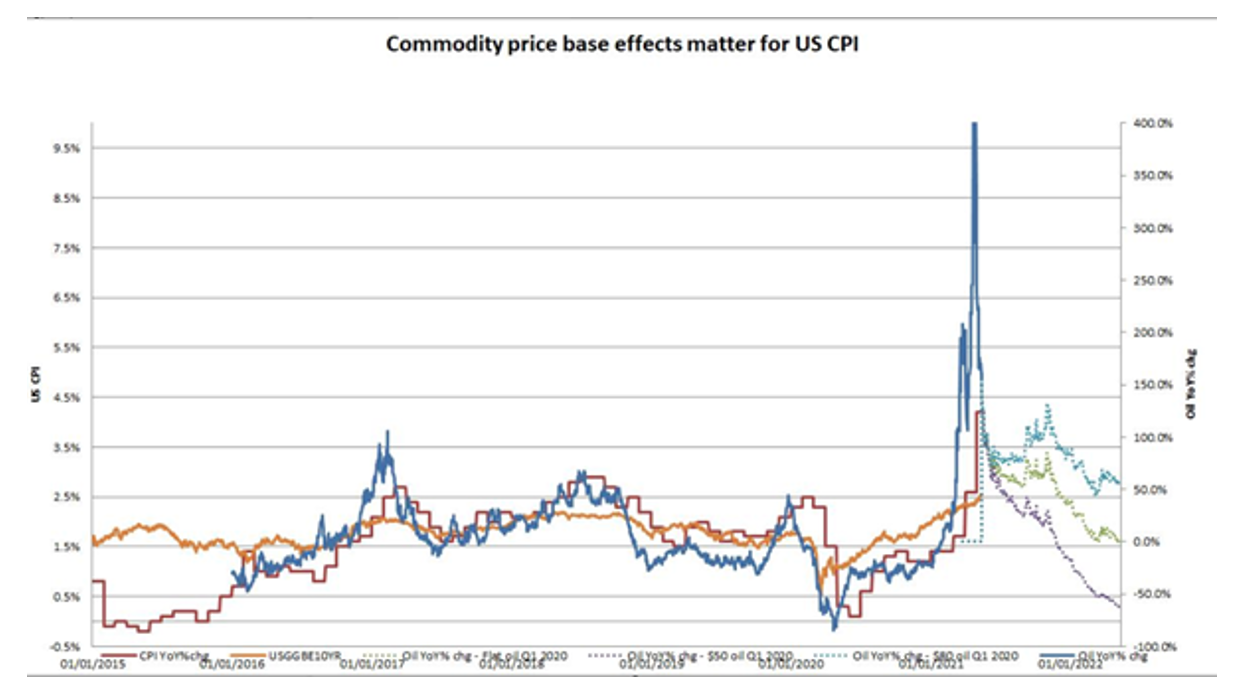
Global Bonds Portfolio Manager at Janus Henderson Investors Andrew Mulliner provides commentary on US inflation figures.
The big beats in US CPI today do tell us a few things about the current economic environment, but one of those things isn’t that there is a change in the secular inflation regime.
The magnitude of the beat appears shocking, but needs to be seen in the context of the historic base effects and the unique impact of lock downs and reopening on the data at the moment.
The leading drivers of inflation in yesterday’s print was used car prices and airline fares, which together illustrate the specific idiosyncrasies of the current environment, with reopening factors (airline fares) coming back very strongly having been exceptionally subdued as a result of the pandemic and supply chain bottlenecks (used cars) causing price pressures in various sectors.
Perhaps just as importantly OER (owners equivalent rent) was up by 0.2% month on month (the same magnitude of the last months data), suggesting that for now at least the stickier and less volatile/transitory components of inflation remain benign.
Inflation should be expected to rise even further in next months print as the base effects from last year peak out as illustrated by the chart below which shows the YoY change in the oil price vs US CPI.
Somewhat surprisingly, understanding how YoY changes in oil are likely to evolve gives a very good insight into the likely direction of inflation. Of course whilst this year sees a phenomenal positive base effect this falls off sharply into the end of this year and into 2022.
So what to draw from it all. The Fed’s stance on the transitory nature of inflation at this point of time appears justified. Inflation pressures will likely lift further in the near term, before falling back later in the year.
Unfortunately the term inflation is often used with little precision and often shorter term changes in price level are described as inflation, but for the term inflation to really qualify the changes in price levels must be persistent through time and be broad based.
Unless used car prices continue to surge at their current rate through time and airline fares continue to rise, these ‘inflationary’ factors today will turn into disinflationary factors in the future.
Historically persistent inflation has required a tight labour market and consistent wage gains to support consumption at ever higher price levels. With labour market slack still quite high we think the Fed is appropriately looking through these increases of inflation at this point in time.
Should we see wage gains to come through and persist and the supply chain issues that are lifting input prices to continue beyond the near term, then our relaxed view of the secular inflation outlook will need to be adjusted.
For now, we believe the structural drivers of low inflation of the last few decades (technology, demographics and globalisation) remain in place and subsequently the near term price pressures will abate to reveal ongoing low inflation pressures in the years to come.
For portfolios we think the pricing of certain inflation markets looks increasingly excessive, but we are mindful that the inflation prints have not yet peaked and therefore we may have further to go in the near term.
For now we see higher bond yields as an opportunity to add exposure to our funds and ultimately we expect inflation expectations to fall from their current lofty levels in the medium term.































